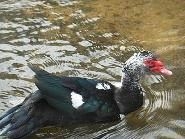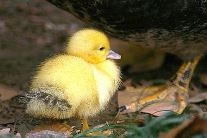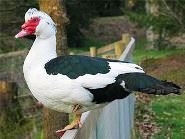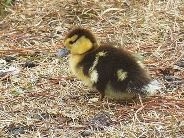Lake Charlene Homeowners Association
About Our Ducks!
Lake Charlene has some Mallard ducks year-round, and in most winters American Coots: small black ducks that can dive for 15 seconds or more to feed on the lake bottom. You can see a group of ten or more Coots on the lake, and at the next glance there are only a few!
But Lake Charlene’s beloved Muscovy ducks (Cairina moschata domestica) are our most common, which have populated our waterways since development. These friendly birds have become welcome neighbors and sometimes will approach you for food. Dried cracked corn is their favorite (available from feed stores and Amazon), or other bird seeds, but please do not feed them bread, as it degrades their health with inadequate nutrition and calories.
Muscovies only require that we let them cross the road (rather slowly) when the urge hits to get to the other side, especially at the corner of Clydesdale and 69th. Notably, Muscovies do not quack. They communicate with a low breathy hissing, lots of head bobbing, and wagging their tails—many extended gossip sessions have been observed! Males can be somewhat aggressive, fighting over food or mates. Although “waddling” is the preferred method of transport, they can and do fly—very low across the water, sometimes with abrupt ascent to a tree at the end. At night they often sleep at water's edge, to be able to flee quickly from predators if awoken.


Appearance
The bright red wattle, while unappealing at first glance, is their unusual and distinctive mark—and can become quite endearing! Muscovies are large ducks. The domestic drake can be up to 34 in. long and weighs 10 to 15 lb., while the domestic hen is considerably smaller and grows only to about half the male's size. The bird is predominantly black and white, with the back feathers being iridescent and sometimes dark green in males, while the females are more drab. The amount of white is variable, as well as the bill, which can be yellow, pink, black, or any mixture of these. They may have white patches or bars on the wings, which become more noticeable during flight. Both sexes have the red wattle around the bill, those of the male being larger and more brightly colored. For a while after hatching, ducklings lack the distinctive wattles associated with adults. The true wild Muscovy male has a short crest on the nape.
Nesting
Muscovy ducks can breed on farms or near urban and suburban lakes, nesting under shrubs in yards or under roof overhangs. They can breed up to three times each year, and will mate on land or in water. Like the mallard, they do not form stable pairs.
The hen lays a clutch of 8-16 white eggs, which are incubated for 35 days. The sitting hen will leave the nest once a day from 20 minutes to one and a half hours, and will then defecate, drink water, eat, and sometimes bathe. Once the eggs begin to hatch, it may take 24 hours for all the chicks to break through their shells. Chicks’ bodies cannot produce all the heat they need, so they will stay close to the mother for about 10-12 weeks, especially at night. Often, the drake will stay in close contact with the brood for several weeks for protection.

For the first few weeks of their lives, Muscovy ducklings feed on grains, corn, grass, insects, and almost anything that moves. Their mother instructs them at an early age how to feed.
Origins
Muscovies are native to Mexico, Central, and South America. They had been domesticated by various Native American cultures in the Americas when Christopher Columbus arrived in the Bahamas. A few were brought onto his ship Santa Maria and then sailed back to Europe. Today, small breeding populations have established themselves in the United States, particularly in Florida and the lower Rio Grande Valley of Texas, as well as in many other parts of North America including southern Canada. They can be found also in New Zealand, Australia, and in parts of Europe.
Name
It is not clear how the term came about. It very likely originated between 1550 and 1600.
“Muscovy” is an old name for the region of Russia surrounding Moscow. It has been claimed that its “Company of Merchant Adventurers to New Lands” traded these ducks to Europe occasionally after 1550. This chartered company eventually became known as the “Muscovite Company,” so the ducks might thus have come to be called “Muscovite ducks.” But it is unlikely that the company traded produce from the Americas.
Alternatively, in reference to the singular appearance of these birds, “Muscovy” might be simply a generic term for an exotic place—just as the American “turkey,” or the “guineafowl” (which are not limited to Guinea).
Another view connects the species with the Muisca, a Native American nation in today’s Colombia. It is likely that the duck was kept by the Muisca for its meat, and “Muisca”may have been corrupted into something more familiar by Europeans. Similarly, the ducks may have been named after the region where the Miskito Indians keep them in Nicaragua and Honduras.
One reference says, “It is called the Muscovy Duck…from the rather strong musk odour it exudes.” In general, “Barbary duck” is the term used for C. moschata in a culinary context.
Adapted with gratitude from Wikipedia.
Last updated on 03/29/2018
- Membership
- Membership in this website is private. Request membership access.


